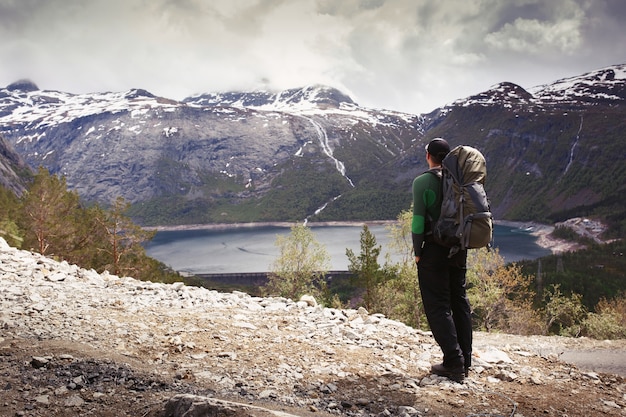
Before planning your next trip to Europe, it’s wise to get familiar with the Schengen visa countries. Many travelers aren’t sure what the Schengen area is or whether they need a visa to visit these countries. Not knowing about it could put your holiday at risk.
This guide covers everything you need to know about the Schengen visa countries, including the agreement’s impact on your travel plans and what each country has to offer.
The Schengen Agreement, established in 1985, aims to remove internal borders between participating European countries, meaning you don’t have to show your passport when traveling from one country to another within the zone. Initially, only five countries were part of this agreement, but it has since grown to include 26 countries, making it the largest free movement area in the world. Twenty-two of these are EU member states, while four others (Bulgaria, Croatia, Cyprus, and Romania) plan to join in the future. Additionally, non-EU countries like Iceland, Norway, Liechtenstein, and Switzerland are part of this area. The UK and Ireland, however, have opted out, requiring passport control.
For non-EU travelers, including those from the U.S., Canada, Australia, and the UK, travel to Schengen countries is generally visa-free for up to 90 days within a 180-day period. However, starting January 2021, travelers from visa-exempt countries must obtain pre-authorization via ETIAS (European Travel Information and Authorization System) before entering the Schengen Area.
Here’s a brief overview of some Schengen countries and what they offer:
– Austria: Famous for its Baroque architecture, classical music, and traditional dishes like Wiener Schnitzel.
– Belgium: Known for medieval towns and Renaissance architecture. Visit the capital, Brussels, and the charming city of Bruges.
– Czech Republic: Famous for the city of Prague, with other attractions like Špilberk Castle in Brno.
– Denmark: Clean and progressive, renowned for its warm and inviting people in cities like Copenhagen.
– Estonia: Features beautifully preserved medieval towns and seaside resorts like Pärnu.
– Finland: Offers diverse landscapes from saunas in Helsinki to the northern lights in Lapland.
– France: From Parisian landmarks to wine regions, France boasts cultural richness and scenic beauty.
– Germany: Home to Berlin’s alternative atmosphere, Gothic cathedrals in Cologne, and Munich’s Oktoberfest.
– Greece: Offers ancient ruins in Athens and picturesque islands like Santorini and Mykonos.
– Hungary: Known for architecture mixing multiple cultural influences, especially in Budapest.
– Iceland: Famous for natural wonders like the Blue Lagoon and Gullfoss waterfall.
– Italy: Offers historic ruins, countryside tours, and Venetian canals, along with world-renowned cuisine.
– Latvia: A mix of historic cities and beautiful landscapes, with a notable capital, Riga.
– Liechtenstein: Small but packed with medieval towns and snow-capped mountains.
– Lithuania: A rich cultural heritage with historic old town churches in Vilnius.
– Luxembourg: Despite its size, it offers stunning palaces, castles, and forests.
– Malta: A diverse island reflecting Arabic, Greek, and Italian influences.
– Netherlands: Famous for Amsterdam’s canals, the Hague, and Rotterdam.
– Norway: Offers dramatic fjords and northern lights, ideal for outdoor lovers but can be expensive.
– Poland: Mix of medieval old towns in Krakow and countryside like Bialowieza Forest.
– Portugal: Rich in culture, with cities like Lisbon and coastal towns like Tavira and Albufeira.
– Slovakia: Features natural beauty like the Tatra Mountains along with historic city Bratislava.
– Slovenia: Offers diverse landscapes from Alpine cliffs to Adriatic coast towns.
– Spain: Culturally rich with cities like Barcelona and Madrid, and scenic spots like the Canary Islands.
– Sweden: Home to scenic landscapes and a capital, Stockholm, offering rich cultural experiences.
– Switzerland: A blend of European cultures with a high quality of life, famous for chocolate, cheese, and pristine mountains.
Transportation options in Europe are robust, offering choices like air travel, trains, buses, and car rentals. Each has its advantages depending on your destination and budget.
– Air Travel: Best for long distances with budget airlines like RyanAir and EasyJet offering affordable options.
– Train Travel: Popular for its efficiency and scenic routes; consider getting a Eurail pass for multiple trips.
– Bus Travel: Cheapest but time-consuming, with companies like FlixBus and BlaBlaBus offering extensive routes.
– Car Rental: Offers flexibility for exploring at your own pace, though be aware of international driving rules and restrictions on cross-border travel.
With its diverse landscapes, vibrant cultures, and stunning architecture, Europe remains a top destination for travelers. Whatever your travel style, there’s a Schengen country that fits your preferences. Now that you’re informed about the Schengen visa countries, start planning your perfect European vacation. Pack your bags, book your tickets, and get ready to explore Europe without borders.


